Newsletter July 2022
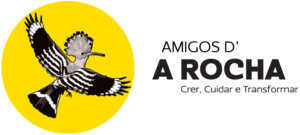
 Enjoy the summer 🙂
Enjoy the summer 🙂
This month find out this beautiful and colorful thistle!
Helen & Filipa
S
N
A
P
SHOT

Bartolomeu Lourenço de Gusmão

Portuguese-Brazilian priest, scientist and inventor
Born: 19th December, 1685, Brazil (at the time part of Portuguese Kingdom)
Died: 18th November, 1724, Spain
Bartolomeu Lourenço de Gusmão, was born on the 19th of December of 1685 in Santos, São Paulo, Brazil (at the time it was a Portuguese colony); his father was a surgeon and had 12 children, 8 of them entered into a religious life. He studied at the Seminary of Bahia, where he became a priest. The Director of the Seminary, the Jesuit Alexandre de Gusmão, was his protector, and later on he adopted his surname in honour to him.
During his time at the Seminary, he made his first invention, a machine to lift up the water and to transport it wherever ii was needed; the patent was registered on the 23rd of March in 1707, the first given to a Brazilian. In 1701 he travelled for the first time to Portugal, where he returned in 1708, to study in Coimbra University; he gave up after a couple of months and settled in Lisbon, where he was invited to become part of the King John V court. Here he presented his most famous invention a small hot-air balloon, known as “Passarola”. Bartolomeu de Gusmão was one of the main characters of the bestseller “Memorial do Convento” written by the Literature Nobel Prize, José Saramago.
During his life he invented many things, inspired in the teachings of Arquimedes. He travelled around Europe and invented a draining machine in The Netherlands. In Portugal he was chased by the Inquisition and had to escape to Spain, where he died. His last remains were found in 2004 and brought back to Brazil.
IFO’s – Identified Flying Objects…

Small Dusty Wave
(Idaea minuscularia, Ribbe, 1912)
Photo by Filipa Bragança

Morphology: It is a macro moth from the Geometridae Family, with a wingspan between 12 and 18 mm. The upper part of the wings are white with faint transversal lines and small black dots. The wings are wide open when resting. Several generations per year. The adults can fly all year round.
Habitat: Near the coast, in dry places with few plants, farmlands, shrublands, cultivated areas, and in villages on buildings and walls.
Distribution: Southwestern Europe (Iberia Peninsula), North Africa, Balearic Islands and recently was recorded in Azores (introduced).
Notes: The larvae is polyphagous and feeds on near ground herbs (eg. Bermuda buttercup (Oxalis pes-caprae)). This species was first recorded in S. Miguel, Azores in December 2013.
Tweet… Tweet…


Dartford Warbler
(Curruca undata, Boddaert, 1783)
Photo by Guillaume Réthoré
Identification: It is a small warbler from the Sylviidae Family, with 13 to 14 cm in length. The upperparts are grey-brown and below are reddish-brown, in the centre of the belly it has a dirty white patch; the tail is long and the bill is thin and pointed, it has light speckles on the throat and a red eye-ring. The females are less dark above and paler below.
Habitat and Ecology: Inhabits in semi-open lands, prefers dense and low shrublands, with thick scrubs, dense thorn scrub or shrubby saltmarshes. The compacted cup-shaped nest is located on a dense bush half a metre from the ground. Hard to see, spends most of the time inside dense bushes. The diet is mostly insectivorous (insects, caterpillars, butterflies, beetles and spiders).
Distribution: Southern and Western Europe (Portugal, Spain, France, Italy and Southern England) and Northwest Africa (Morocco, Tunisia and Algeria).
Threats and Notes: Near Threatened (NT) according to the Red List of the International Union for Conservation of Nature (IUCN). The population underwent a large decline, probably due to habitat loss, overgrazing and climate change (large fires).
DID YOU KNOW? 
- On the 3rd of June, Guillaume Réthoré, during a birdwatch trip to Ria de Alvor, saw a Royal or West African Crested Tern (Thalasseus
 maximus/albidorsalis), this species is a rarity around the area and in Portugal. It is very difficult to separate this 2 species, because they have similar plumages; until recently the West African Crested Tern was considered a subspecies of the Royal Tern.
maximus/albidorsalis), this species is a rarity around the area and in Portugal. It is very difficult to separate this 2 species, because they have similar plumages; until recently the West African Crested Tern was considered a subspecies of the Royal Tern.
- This breeding season at the estuary of Ria de Alvor, a pair of Avocets, built their nest. In the past there were several attempts of breeding, although none was successful! On the 21st of June, an adult Avocet was seen with one baby chick!
- During June’s month, at our ringing station, were caught several juveniles: Blackbird (Turdus merula), Sardinian Warbler (Curruca melanocephala), Common Linnet (Linaria cannabina), Goldfinch (Carduelis carduelis), Great Tit (Parus major), Blue Tit (Cyanistes caeruleus), Iberian Magpie (Cyanopica cookie), Spottless Starling (Sturnus unicolor), European Greenfinch (Chloris chloris) and European Serin (Serinus serinus).

European Serin (Serinus serinus)

European Greenfinch (Chloris chloris)
- On the 8th of June, was celebrated World’s Ocean’s day! Did you know that 70% of all the rubbish found in the Oceans is plastic? In our oceans
 are five floating plastic islands, the biggest – the North Pacific Garbage Patch – is equivalent in size to France, Spain and Germany together!!!
are five floating plastic islands, the biggest – the North Pacific Garbage Patch – is equivalent in size to France, Spain and Germany together!!!
 INVASIVE SPECIES
INVASIVE SPECIES
Eastern Grey Squirrel (Sciurus carolinensis, Gmelin, 1788)
Phylum: Chordata
Class: Mammalia
Family: Sciuridae
Origin: Eastern North America
Size: 23 to 30 cm (head and body), 19 to 25 cm (tail)
The Eastern Grey Squirrel, is a medium size tree squirrel. The upperparts can vary from grizzled dark to pale grey with some cinnamon tones on the hips, feet and head; the underparts are grey to buff. The tail is large and fluffy (whitish to pale grey) and the ears are pale grey to white. Melanism (increase of dark pigment in the fur) is common in the northern parts of its native range; melanistic individuals have their fur almost entirely black. This species do no show sexual dimorphism, females and males are alike.

Photo by Guillaume Réthoré
This species is native to the Eastern United States and South of Canada and inhabits mature continuous woodlands where there is a mixture of nuts producing species, they are more common on broadleaf woodlands and can also be found on urban parks. Their diet consists mainly of nuts (acorns, beechnuts and chestnuts), but they also can eat buds, flowers, fruits, seeds, fungi, some insects and occasionally bird eggs. They bury food in winter caches and locate them using both memory and smell.
The Eastern Grey Squirrel was introduced in the United Kingdom in 1870 and spread rapidly across England and became established in Wales and South of Scotland. This species also was introduced in other parts of North America, South Africa, Italy, Norway, Ireland, Netherlands and Australia. In some areas in Europe it is considered an invasive species (nominated one of the 100 worst invaders); they can damage trees by stripping the bark and can cause local extinctions of the Red Squirrel (Sciurus vulgaris) through competition and disease.
POPPED UP
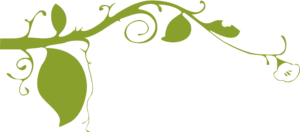
Family: Asteraceae
Identification: It is a biannual or perennial herbaceous plant, can grow from 15 to 125 cm in height. The stems and leaves are spiny and hairy; the leaves are irregularly spiky and toothy. The flowers-heads grow at the axils of the leaves and the flowers are bright yellow. Flowers from May to August.
Habitat and distribution: Grasslands, uncultivated fields, fallow lands, weed areas, clearings, waste places and road sides, in dry and sunny places. Native from the Mediterranean Region.
Notes: This species was introduced is some parts of Europe and in Brazil. This plant has been known since ancient times for medical and culinary uses. In Portugal and Spain it is used in local gastronomy, mainly the stems and leaves when young and fleshy.

Photo by Filipa Bragança
Common Goldenthistle (Scolymus hispanicus, L.)
DATES TO REMEMBER

3rd July – International day of NO plastic bag usage
7th, 14th, 21st and 28th July- Cruzinha Bird ringing display & Moth Talk (10 am to 12 am). Book here
From 15 of July A Rocha will take part on the project “Live Science in Summer” with the same activities of open days (from 9 am to 12 am)
28th July – Nature Conservation Day
30th July – International Friend’s Day
Thank you for supporting the Friends of A Rocha Portugal
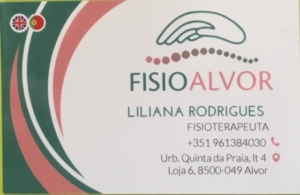
Physiotherapy, Massages (relaxation, sports, therapeutic)
Other therapies
Beauty (manicure, pedicure, hair removal, facials)
Open Monday to Friday

Dr Roy Rodrigues
Av. Do Brasil, Qta das Palmeiras, Lt P2, R/c A, 8500-299 Portimão
(+351) 282180683
royaldente@gmail.com
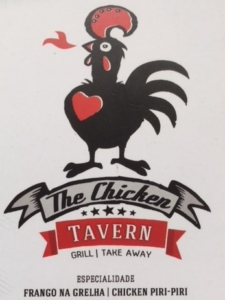
Urbanização Mar e Serra n° 47, Alvor
8500 – 783 Portimão
(+351) 911597735
Thought of the month 
“The environment is where we all meet; where we all have a mutual interest; it is the one thing all of us share.” – Lady Bird Johnson, American socialite, first Lady of United States between 1963-69, wife of President Lyndon B. Johnson, 1912-2007)

LETS BE GREEN – LETS BE GREEN – LETS BE GREEN 
Reduce energy! Is easier and cheaper!
- Charging our phone in aeroplane mode is faster because aeroplane mode turns off all radio frequencies on your device. Charge it in this mode
 before bedtime to avoid letting your phone be plugged in all night which consumes more energy and increases the risk of fire.
before bedtime to avoid letting your phone be plugged in all night which consumes more energy and increases the risk of fire.
- Your TV, microwave, laptop charger, phone chargers, all these appliances are still ON as you read this. Around 10% – 15% of our electricity consumption at home came from appliances in standby mode. What can we do about this is either switch off or even unplug your appliances when not in use.
- Switch to LED bulbs, they last longer and spend less energy than standard bulbs, up to six times less.
LETS BE GREEN – LETS BE GREEN – LETS BE GREEN
Ringing Controls

Spoonbill with colour ring
Ringing controls are birds which are reported from sites other than the original ringing location. In our ringing station, at Cruzinha sometimes we capture birds which were ringed somewhere else; or some of the birds ringed at Cruzinha are caught in our nets again. Although most of the controls refer to birds with code rings or colourful rings, like Flamingos, Spoonbills or waders; these birds were not caught but their rings were recorded during birdwatching activities.
In 2021, the species with more controls was the Greater Flamingo; were recorded 36 code rings, most of them were ringed in Spain. The second species with more records was the Mediterranean Gull, with 15 sightings of code rings. The long lived bird was a Lesser Black-backed Gull, was 14 years old and a Eurasian Spoonbill, was more than 13 years old. The most distance of a bird recorded, was a Mediterranean Gull, ringed in Hungary.
Read the full report here
Climate change – plants
Plants play an important role in our ecosystems and also in our daily life. Through photosynthesis, plants use sun light, Carbon Dioxide and water to create energy and release Oxygen (absorbs 30% of the carbon Dioxide produce by humans, they are very important in water cycle regulation, they protect the soil from erosion and keep it fertile (through the nutrient cycle); plants are the basis of the food chains and an important food resource for man (man cultivates plants for consumption); plants can remove air pollutants and purify the drinking water (wetlands remove heavy metals and excessive levels of nutrients) and they have important compounds useful in medicine.
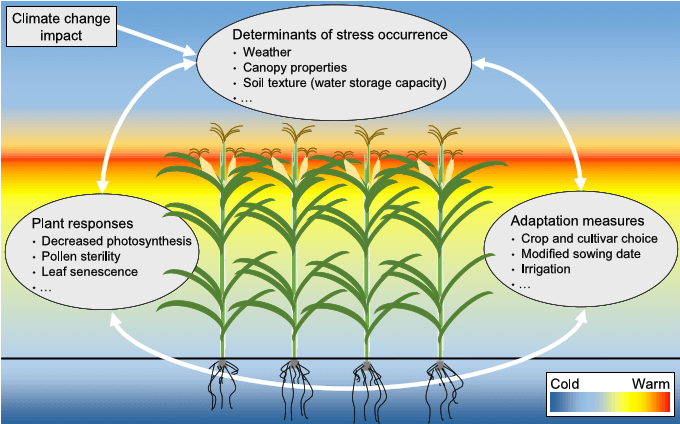 Rising levels of CO2 in the atmosphere drive an increase of plant photosynthesis; between 1982 and 2000, plant photosynthesis grew 12%, which resulted in more growth (in average some crops growth more 21% above soil and 28% under soil). Under elevated concentrations of CO2, plants use less water, although the rising temperatures means longer and warmer growing seasons, plants will grow more and will consume more water, and consequently there will be a decline of rivers and streams.
Rising levels of CO2 in the atmosphere drive an increase of plant photosynthesis; between 1982 and 2000, plant photosynthesis grew 12%, which resulted in more growth (in average some crops growth more 21% above soil and 28% under soil). Under elevated concentrations of CO2, plants use less water, although the rising temperatures means longer and warmer growing seasons, plants will grow more and will consume more water, and consequently there will be a decline of rivers and streams.
Climate change is affecting the availability of nutrients in the soil, especially Nitrogen (the most abundant element on earth). Plants need Nitrogen to produce carbohydrates and proteins to grow. Although Nitrogen is very abundant in the air, it cannot be absorbed by plants, they need the help of some bacteria in the soil which are responsible for a process called Nitrogen fixation. The bacteria are attached to the roots of some plants (legumes) and fix the Nitrogen into compound plants, it then uses and the plant exchanges, giving them Carbon. Some scientists think the fixation process works faster at 25°C and above that, it will slow down, so if temperatures are rising less Nitrogen is fixed, resulting in less plant productivity (less Carbon Dioxide consumption). Some important compounds of plants (like enzymes) are less efficient in higher temperatures and can be totally deactivated if temperatures are too high.
To be continued…
Sustainability Champions 
Sustainability Champions from around the World– Looking at ways to curb pollution and waste management.
We would like to thank Daniel Hartz, the founder of Sustainability Champions for giving us the permission to share this information.
 This team creates reusable telescopic stainless steel cutlery sets and dental hygiene kits made from bamboo, and they aim to reduce 40 Billion pieces of plastic cutlery.
This team creates reusable telescopic stainless steel cutlery sets and dental hygiene kits made from bamboo, and they aim to reduce 40 Billion pieces of plastic cutlery.
Owny Planet is an environmentally conscious community dedicated to a long-term future. They not only raise awareness through social media, but they also take action by cleaning filthy parks and beaches, providing re-useable bags, and assisting eco campaigns. Owny Planet began as a pair of friends picking up rubbish, and have grown into an incredible community of people with diverse abilities who share a common passion and mission: Planet Conservation
Everyones plastic cutlery and dental equipment waste can be greatly reduced thanks to Owny Pocket. All instruments needed for gourmet dining on the go are included in the Owny Pocket special flatware set, which comprises, spoon, fork, knife, straw, and straw cleaner.
Summer is coming – please don’t use plastic cutlery for your picnics, there are many other alternatives.

Help SPEA save thousands of seabirds
 In June, SPEA launched Stop Bycatch, a fundraising campaign to prevent bycatch – the incidental capture of seabirds in fishing gear, one of the biggest threats to the world’s most endangered bird group. Every year, an estimated 200 thousand seabirds – such as gannets, shearwaters and razorbills – die in European waters, accidentally caught in fishing nets, lines and hooks.
In June, SPEA launched Stop Bycatch, a fundraising campaign to prevent bycatch – the incidental capture of seabirds in fishing gear, one of the biggest threats to the world’s most endangered bird group. Every year, an estimated 200 thousand seabirds – such as gannets, shearwaters and razorbills – die in European waters, accidentally caught in fishing nets, lines and hooks.
The Stop Bycatch campaign aims to support the deployment of measures such as ‘scarybird’ kites, a kind of kite shaped like a bird of prey, which seabirds mistake for a predator; when they see the ‘scarybird’ kite, seabirds keep their distance.
More info here

Check the website for dates for organised tours
Guillaume Réthoré (Gui)- My life with birds: Black-bellied Sandgrouse (Pterocles orientalis)
 Some species are more difficult to see than others! Seeing one is great, getting a good picture, even better! The Black-bellied Sandgrouse is one of them. This secretive species has a very mimetic plumage. If they are on the ground, they are almost invisible, blending very well in their environment. Fortunately, seeing them in flight is easier. Usually, you hear them, a “bubbling chürr’r”, according to the Collins Bird Guide. Then, you start looking everywhere until they finally show-up. Unfortunately, sometimes, they pass far away, but on that day, they passed pretty close and I managed this nice picture, one is even looking at me! In the picture, it is possible to see the black belly which gave them their name. The birds on the right and the one on the left are males, they have a grey head and a rufous collar. The other birds are female.
Some species are more difficult to see than others! Seeing one is great, getting a good picture, even better! The Black-bellied Sandgrouse is one of them. This secretive species has a very mimetic plumage. If they are on the ground, they are almost invisible, blending very well in their environment. Fortunately, seeing them in flight is easier. Usually, you hear them, a “bubbling chürr’r”, according to the Collins Bird Guide. Then, you start looking everywhere until they finally show-up. Unfortunately, sometimes, they pass far away, but on that day, they passed pretty close and I managed this nice picture, one is even looking at me! In the picture, it is possible to see the black belly which gave them their name. The birds on the right and the one on the left are males, they have a grey head and a rufous collar. The other birds are female.
Sandgrouse gather at sunrise at ponds to drink, and then disperse in the area where they tend to stay still, during most of the day, their plumage making them almost invisible. Only 2 species occur in Europe, many more are found in Africa and Asia.
Text and photo by Guillaume Réthoré
Editor: Filipa Bragança
English proof reading: Helen Rodda
Portuguese proof reading: Lena Soares
Production controller: Helen Rodda
Email: friends.arpt@arocha.org
Thank you for supporting us!
Hope to see you soon!

 What makes a good Birthday present?
What makes a good Birthday present?


